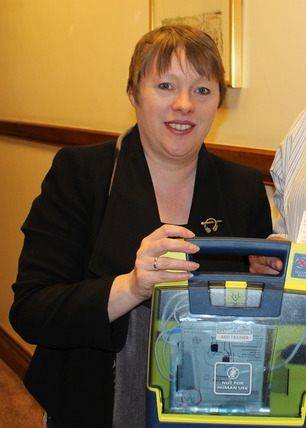
Living in some UK areas increases chances of Cardiac Arrest death
Date: Friday, 21 June 2024. -
Blog, Defibrillators, First Aid Emergencies, Training
In recent years, defibrillators have become increasingly available to the public in the UK. These life-saving devices can now regularly be seen in public places such as restaurants, gyms, supermarkets and train stations.
Figures from defibshop’s Cardiac Coverage report show that the number of defibrillators per 10,000 people in the UK has risen from 4.17 in 2021 to 13.71 in 2024. Despite this, many less affluent areas are still below the national average for number of defibrillators, and survival rates for Out of Hospital Cardiac Arrest (OHCA) in these areas are lower as a consequence.
The moments immediately after a Sudden Cardiac Arrest (SCA) are vital - every minute without CPR and defibrillation results in a 10% fall in the casualty’s chances of survival. Prompt CPR and the use of an Automated External Defibrillator (AED) within 3-5 minutes of collapse increase survival rates from 6% to 74% (British Heart Foundation).
With ambulance response times in the UK around seven minutes, it’s no surprise that areas with fewer publicly available AEDs have a lower survival rate for OHCA. Many people can’t afford to wait those seven minutes and require CPR and defibrillation from a layperson.
Areas with highest and lowest numbers of defibrillators
The City of London is by far the most heart safe area in the UK, with 159.49 defibrillators per 100,000 people. This area is among the most affluent in the country, with the Bank of England and the Stock Exchange located in the City.
In contrast, Newham has the lowest number of defibrillators per 10,000 with 2.79. Despite also being in London, Newham is among the most deprived areas in the capital which is reflected in the poor defibrillator figures.
Labour MP Maria Eagle described public access to a defibrillator as a “postcode lottery” in which life-saving treatment may not be readily available depending on the area you live.

Of more than 30,000 OHCAs in the UK each year, less than 1 in 10 survive.
How we can improve OHCA survival rates
The survival figures for Out of Hospital Cardiac Arrests currently don’t make for good reading and while we don’t yet know how to prevent cardiac arrest - we can prepare for it. To improve survival rates for OHCA, the UK must continue to increase the number of accessible defibrillators.
There is currently no legislation which obliges premises or businesses to provide an AED, yet attitudes towards the necessity of defibrillators have changed in recent years. A campaign following the death of 12-year-old Oliver King in Liverpool in 2012 due to a cardiac arrest greatly contributed to this.
As of 2023, every state school in the UK now has a defibrillator on premises but there is still work to be done - figures from the British Heart Foundation show that public access defibrillators are currently used in less than 10% of OHCA in the UK.
Imperative Training and defibshop’s Mission
Since 2003, we have been committed to making the UK a more heart-safe country by teaching life saving skills including CPR and use of an AED, as well as supplying communities and businesses with vital defibrillators.
Contact This email address is being protected from spambots. You need JavaScript enabled to view it. or call 0161 776 7420 to discover how we can help you.
